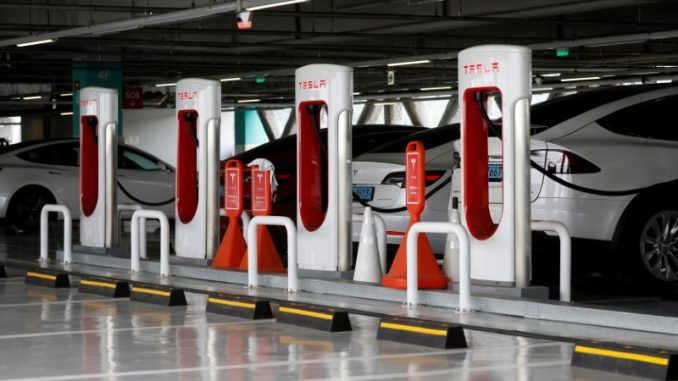
Introduction
In a monumental and game-changing announcement, Tesla, the electric vehicle (EV) pioneer, has revealed its plans to open up its extensive Supercharger network to electric vehicles from other automakers. This bold move has the potential to revolutionize the electric vehicle industry, making EV charging more accessible and convenient for all. In this article, we will delve into the details of Tesla’s groundbreaking decision and the implications it holds for the future of electric mobility.
The Tesla Supercharger Network: A Game-Changer in EV Charging
Since the inception of Tesla’s Supercharger network in 2012, it has served as a hallmark of the company’s commitment to expanding the EV ecosystem. With thousands of charging stations worldwide, the Supercharger network has provided Tesla owners with rapid and convenient charging capabilities, significantly reducing range anxiety and enabling long-distance travel.
However, until now, access to these Superchargers has been exclusive to Tesla owners, limiting their utility for the broader EV community. This restriction has been a significant obstacle to achieving widespread electric vehicle adoption.
Tesla’s Decision to Open Superchargers to All EVs
Tesla’s decision to open its Supercharger network to all electric vehicles marks a significant shift in its approach to charging infrastructure. Elon Musk, Tesla’s CEO, announced this pivotal decision via Twitter, stating that Tesla intends to open its network to other automakers later this year.
While specific details about the rollout, compatibility, and pricing structure are yet to be disclosed, the overarching goal is clear: to accelerate the transition to electric mobility by increasing the accessibility and convenience of charging options.
Implications for the EV Industry
Tesla’s move to open its Supercharger network to all electric vehicles carries several profound implications for the EV industry:
- Expanded Charging Infrastructure: Access to Tesla’s Supercharger network will significantly expand the available charging infrastructure for non-Tesla EV owners. This will be particularly beneficial in regions where public charging infrastructure is still developing.
- Reduced Range Anxiety: The widespread availability of Tesla Superchargers will help alleviate range anxiety for all EV drivers, making long-distance travel more accessible and convenient. This, in turn, is likely to boost consumer confidence in EVs.
- Standardization and Interoperability: Tesla’s decision may encourage standardization and interoperability in the EV charging industry. The move could encourage other charging networks to consider similar measures, ultimately simplifying the charging experience for all EV users.
- Innovation and Competition: The inclusion of Superchargers in the competitive charging landscape may spur innovation and competition among charging network providers, potentially leading to improved charging speeds, efficiency, and user experience.
Challenges Ahead
While Tesla’s decision to open its Supercharger network to all EVs is undoubtedly a positive step towards a more accessible and interconnected charging ecosystem, several challenges must be addressed:
- Compatibility: Ensuring that non-Tesla EVs can physically connect to and use Tesla Superchargers without any issues will require technical considerations and potential adaptations.
- Pricing Structure: Determining a fair and sustainable pricing structure for non-Tesla EV users will be critical. Tesla will need to strike a balance between affordability and covering operational costs.
- Scaling Infrastructure: To accommodate a broader user base, Tesla will need to expand its Supercharger infrastructure, particularly in high-demand regions.
- User Experience: Tesla will need to address the user experience, including payment processes and app integration, to ensure a seamless and user-friendly charging experience for all EV owners.
Conclusion: A Turning Point in EV Charging
Tesla’s decision to open its Supercharger network to all electric vehicles is a watershed moment in the electric vehicle industry. It signifies a shift towards collaboration, accessibility, and a shared commitment to accelerating the adoption of electric mobility. As the EV landscape continues to evolve, Tesla’s visionary move has the potential to catalyze an era of convenience, interoperability, and sustainability in electric vehicle charging, bringing us closer to a future where electric vehicles are the norm rather than the exception.